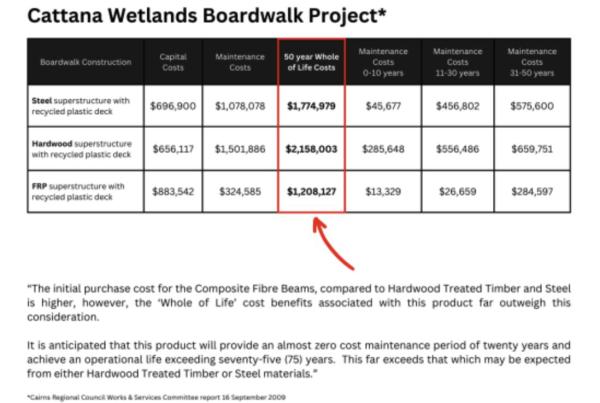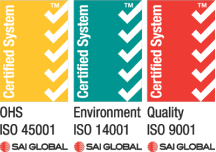Fibre Reinforced Polymer (FRP) is a widely accepted alternative to steel and other materials. The performance advantages of FRP have been well received by many different industries, including aerospace and marine. FRP is acclaimed for its corrosion resistance, reduced maintenance costs and wide structural applications in a range of extreme environmental conditions.
A reinforced polymer is naturally lightweight while still meeting all stiffness criteria, does not rot or shrink and is resistant to termites and borers. This composite material is also non-conductive, and due to its lower modulus of elasticity, it has a level of impact resistance. The polymer matrix is capable of withstanding and distributing a heavy working load.
Steel products are known to permanently deform under working load or impact, especially in cold environments. Steel is not the right choice in corrosive environments and is simply not the right material for coastal environments. Steel requires painting or galvanising to be suitable for some environments and is heavy in weight, making transport and installation more difficult or costly.
Pultruded FRP structural profiles have a higher tensile strength than traditional steel. In fact, a glass fibre reinforced polymer (GFRP) rebar has a 20% higher tensile strength in comparison to a steel rebar. FRP reinforcement has therefore become a popular alternative to steel reinforcement, especially with its added bonuses of being lightweight and resistant to corrosion.
Learn more about FRP vs Steel


